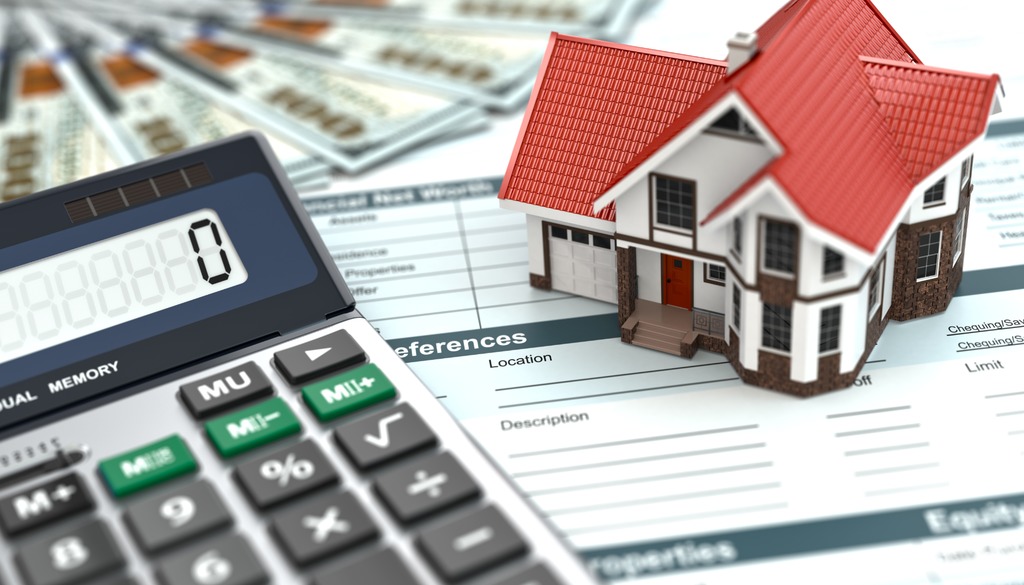Buying your first home is a rite of passage, a mix of excitement, nerves, and a barrage of questions. Where do I start? What can I afford? Who can I trust? Fear not, intrepid homebuyer, for you’ve stumbled upon the ultimate guide. We’re here to simplify the process, providing you with the roadmap you need to navigate this journey with confidence. From understanding your budget to turning the key in your new front door, we’ve got you covered every step of the way.
Table Of Contents
- Getting Started
- The Financials: Budgeting and Mortgages
- Finding The Right Home
- Making an Offer and Negotiations
- The Closing Process
- Moving In
- Conclusion
- FAQ’s
Getting Started
Understanding Your Reasons for Buying
Diving into homeownership is a big decision, one that requires a deep dive into your personal “why.” Are you looking for a stable place to grow roots, an investment to grow your wealth, or perhaps a bit of both? Pinpointing your motivation will guide your decisions down the road.
Assessing Your Financial Readiness
Let’s talk turkey—financial turkey, that is. Assessing your financial readiness is about more than having enough for a down payment. It’s about looking at your financial health holistically, including savings, debt, and income stability. Are you financially fit to take on a mortgage?
The Importance of Credit Scores
Think of your credit score as your financial handshake. It tells lenders a lot about your financial reliability. A strong score can lead to better mortgage rates, so if yours could use some sprucing up, now’s the time to start.
Finding a Realtor That Will Best Suit Your Needs
The right realtor is a game-changer. They’re not just your access to listings; they’re your guide, negotiator, and support system. Look for someone who gets your needs, knows the area inside and out, and whom you trust implicitly. They should understand your budget, your must-haves, and your deal-breakers. A great realtor can make the home-buying process smoother and less stressful.
The Financials: Budgeting and Mortgages

Determining Your Budget
Your dream home needs to fit your real-world budget. This section will cover how to realistically assess what you can afford, factoring in your income, debts, and future homeownership costs.
Exploring Mortgage Options
Diving into the world of mortgages can feel like exploring a vast ocean without a map. But don’t worry—you’re not setting sail alone. With a plethora of options available, it’s crucial to find the mortgage that best suits your financial situation and homeownership goals. Whether you’re curious about fixed-rate mortgages, adjustable-rate mortgages, FHA loans, or VA loans, there’s a solution tailored to your needs.
Here’s where our experts come in. Our real estate agents and loan officers are equipped with the knowledge and tools to guide you through this sea of options. They’re here to help you understand the nuances of each mortgage type, including terms, rates, and eligibility requirements, ensuring you make an informed decision.
By partnering with one of our professionals, you gain access to personalized advice and insights tailored to your unique financial landscape. They’ll work closely with you to assess your financial health, discuss your long-term goals, and identify the mortgage options that align with your vision for homeownership.
This collaborative approach not only demystifies the mortgage process but also empowers you to move forward with confidence. Our team is dedicated to helping you secure the financing you need to purchase your dream home, providing support and guidance every step of the way.
The Pre-approval Process
Getting pre-approved for a mortgage is like having a golden ticket in the world of home buying. It shows sellers you’re serious and capable of buying their home. Understanding what to expect can make this step less daunting and more of a strategic move towards securing your dream home.
- Gather Your Documents: The first step is to compile all the necessary financial documents. This typically includes recent pay stubs, tax returns for the last two years, bank statements, and details on current debts and assets. Having these documents at the ready will streamline the process.
- Choose a Lender: While our real estate agents can offer guidance on where to start, choosing the right lender is crucial. You’ll want to consider their reputation, the loan options they offer, and how comfortable you feel with their service. Don’t hesitate to shop around and compare rates and fees.
- Application Submission: Once you’ve selected a lender, it’s time to submit your application. This will involve filling out a detailed form with information about your finances, employment, and the type of property you’re looking to buy. Your lender will use this information to assess your loan eligibility.
- Credit Check: As part of the application process, the lender will conduct a credit check. This is where your credit score and history come into play, helping the lender evaluate your risk as a borrower.
- Loan Estimate: If your application looks good, the lender will provide a loan estimate. This document outlines the details of the mortgage offer, including the interest rate, monthly payments, and closing costs. It’s essential to review this carefully and ask questions if anything is unclear.
- Pre-approval Letter: Once everything checks out and you’re approved, you’ll receive a pre-approval letter. This letter indicates how much the lender is willing to loan you and is a powerful tool when making offers on homes. It shows sellers that you’re serious and financially capable of purchasing their property.
Finding The Right Home
Finding the perfect home is like finding the perfect pair of jeans: it’s out there, but it might take some hunting. This part of your journey is thrilling, yet it can feel overwhelming. You’re not just looking for a house; you’re looking for a place to call home. Here’s how to make the search as rewarding and effective as possible.
Identifying Your Must-Haves vs. Nice-to-Haves
First things first, let’s get clear on what you actually need in your new home versus what would be nice to have. Grab a pen and paper (or your digital note-taking app) and split your list into two columns: Must-Haves and Nice-to-Haves.
Must-Haves are non-negotiables. These might include the number of bedrooms and bathrooms you need, accessibility features, or proximity to work or school. Nice-to-Haves, on the other hand, are those features you’d love but can live without, like a swimming pool, a large garden, or an open-plan kitchen.
The Role of a Real Estate Agent
Think of a real estate agent as your home-buying guru. They’re not just there to open doors for you; they’re a fountain of knowledge, from local market trends to the nitty-gritty of negotiation. A good agent listens to your needs, acts on your behalf, and guides you through every step of the process.
But how do you find this magical person? Referrals from friends and family are a great start. Look for someone with a track record of working with first-time homebuyers in your area. Don’t be shy about interviewing potential agents to see if their communication style and dedication match what you’re looking for.
Searching for Homes: Your One-Stop Shop & Open Houses
Forget hopping between external websites to find your dream home. Our website is your one-stop destination, offering comprehensive search tools that allow you to filter listings by your must-haves and nice-to-haves. With our user-friendly interface, you can set alerts for new listings that match your criteria, ensuring you never miss out on potential homes.
What sets our platform apart is the integration of virtual tours, detailed neighborhood insights, and direct lines of communication with real estate agents. This means you can explore homes, gain a deep understanding of different areas, and ask questions all in one place. By leveraging the power of our website, your home search becomes more streamlined, efficient, and enjoyable.
But don’t underestimate the power of seeing a home in person. Open houses can give you a feel for the property and the neighborhood that you just can’t get from photos. Plus, they’re a great opportunity to meet real estate agents and see how they interact with potential buyers.
Making an Offer and Negotiations

How to Make a Compelling Offer
When you’ve found a home that checks all your boxes, it’s time to make an offer. This is where things get real—your offer is the first big step towards negotiating the purchase of your home. Here’s how to make your offer stand out:
- Determine a Fair Price: Start by evaluating the home’s worth. Your real estate agent can help you by providing a comparative market analysis (CMA), which compares the property with similar homes in the area that have recently sold. This information will be invaluable in deciding your starting offer.
- Consider Contingencies: Contingencies are conditions that must be met for the sale to go through. Common contingencies include the home passing inspection, the buyer securing financing, and the home appraising for a certain value. While contingencies protect you as a buyer, be mindful that too many can make your offer less attractive.
- Prepare Your Earnest Money Deposit: An earnest money deposit is a sign of good faith that you’re serious about the purchase. The amount varies, but it’s typically 1% to 2% of the purchase price. This deposit can be forfeited if you back out of the deal for reasons not stipulated by your contingencies.
- Write a Personal Letter: Sometimes, the personal touch can make a difference, especially in competitive markets. Consider writing a letter to the seller explaining why you love the home and how you envision your future there. This can sometimes sway a seller to choose your offer over others.
Understanding Contingencies
Contingencies are your safety net in a real estate transaction, ensuring that critical conditions are met before the sale is finalized. Here’s a closer look at how they work:
- Home Inspection Contingency: This allows you to have the home inspected within a certain period. If significant issues are uncovered, you can renegotiate or withdraw your offer without penalty.
- Financing Contingency: This ensures that if you’re unable to secure a mortgage, you’re not bound to proceed with the purchase.
- Appraisal Contingency: This condition ensures that the home must be appraised at or above the sale price to move forward. If the appraisal comes in lower, you have the option to renegotiate or back out of the deal.
The Negotiation Process
Negotiating the price and terms of your home purchase can be one of the more stressful aspects of buying a home, but it’s also where you can advocate for the best possible deal. Here’s how to navigate the negotiation process:
- Review the Seller’s Response: Once you submit your offer, the seller can accept, reject, or counter. It’s common for there to be a few rounds of counters as both parties work towards an agreement.
- Stay Flexible: Be prepared to compromise on certain aspects, whether it’s the price, the closing date, or contingencies. Flexibility can lead to a successful negotiation.
- Keep Communication Open: Your real estate agent will be your intermediary, relaying your offers and responses. Clear, prompt communication through your agent can help keep the negotiation process moving smoothly.
The Closing Process
Closing on your home might feel like the last leg of a marathon—exciting, yet requiring one final push to cross the finish line. This part of the journey involves a few key steps that culminate in you becoming a homeowner. Let’s break down what you’ll encounter:
Home Inspection and Appraisal
- Home Inspection: After your offer is accepted, you’ll arrange for a home inspection. A professional inspector will examine the property for any issues, from structural problems to outdated electrical systems. If significant issues are discovered, you can negotiate repairs with the seller or, in some cases, choose to back out of the deal.
- Appraisal: Your lender will require an appraisal to ensure the property is worth the agreed-upon price. An appraiser will assess the home’s value based on various factors, including comparable sales in the area. If the appraisal comes in lower than the purchase price, you may need to negotiate with the seller or cover the difference yourself.
Closing Costs and What to Expect
Closing costs are the fees associated with finalizing your mortgage and can range from 2% to 5% of the loan amount. These costs include lender fees, title insurance, appraisal fees, attorney fees (in some states), and more. A few days before closing, you’ll receive a Closing Disclosure form listing all the fees you’re responsible for. Review this document carefully, as it’s the final breakdown of your financial obligations.
Final Walkthrough and Closing Day
- Final Walkthrough: Usually conducted 24 hours before closing, the final walkthrough is your last opportunity to inspect the property. Ensure that all agreed-upon repairs have been made and that the home is in the condition you expect.
- Closing Day: This is the day you’ve been waiting for! You’ll meet with your real estate agent, a representative from the title company, and possibly your lender. You’ll review and sign a stack of paperwork, including the mortgage agreement, title and deed documents, and other legal forms. Once all documents are signed and the closing costs are paid, the keys to your new home are yours.
Moving In
The moment has arrived: you’re officially a homeowner, and it’s time to make the move into your new space. While moving can be a mix of emotions and logistics, approaching it with a plan can make all the difference. Here’s how to tackle this final step with as much ease and efficiency as possible.
Planning Your Move
- Create a Moving Checklist: Start by drafting a comprehensive checklist of tasks to complete for your move. This list should include everything from hiring movers (or renting a moving truck) to changing your address with the post office and utility companies.
- Hire Professional Movers or Plan a DIY Move: Decide whether you’ll hire professional movers or manage the move yourself. Each option has its pros and cons, and your decision might depend on your budget, the complexity of the move, and your personal preference. If you opt for professional movers, get quotes from several companies and check their reviews.
- Pack Strategically: Packing can be one of the most time-consuming aspects of moving. Start early, and pack items you use less frequently first. Label each box with its contents and the room it belongs to. Consider setting aside a box of essentials you’ll need immediately upon moving in, like toiletries, a few dishes, and bedding.
Home Insurance: Protecting Your Investment
Review and Update Your Home Insurance Policy: Now that you’re moving into a new home, it’s crucial to ensure your home insurance is up to date. Your policy should cover the structure of your home, personal belongings, and liability for any injuries that occur on the property. If you haven’t already, shop around for insurance quotes and choose a policy that fits your needs.
Making Your New House a Home
Finally, the fun part—turning your house into a home.
- Deep Clean Before Unpacking: If possible, give your new home a deep clean before you start unpacking. It’s easier to clean shelves, closets, and floors before they’re filled with your belongings.
- Unpack Room by Room: Start unpacking with the rooms you’ll use most frequently, like the bedroom and kitchen. Setting up a comfortable sleeping area and a functional kitchen can make the first few days in your new home more pleasant.
- Personalize Your Space: Begin to make your new house feel like home by hanging pictures, arranging furniture, and adding personal touches. Don’t feel pressured to decorate everything at once. Take your time to live in the space and understand how it works best for you and your family.
Conclusion
Congrats, future homeowner! You’re now equipped with the knowledge to navigate the home-buying process confidently. Remember, buying your first home is more than a transaction; it’s a journey towards building your future. With the right preparation, you’re on your way to unlocking the door to your dream home. Happy house hunting!
FAQ’s
What are the first steps in buying a home?
- Begin by assessing your financial readiness, understanding your motivation for buying, improving your credit score, and finding a realtor who understands your needs.
How much down payment do I need?
- Down payment requirements vary by mortgage type and lender, typically ranging from 3% to 20% of the home’s purchase price.
How do I choose the right mortgage?
- Consider your financial situation, how long you plan to stay in the home, and whether you prefer stable payments (fixed-rate) or lower initial payments (adjustable-rate).
Can I buy a home with a low credit score?
- Yes, but your options may be limited, and you might face higher interest rates. FHA loans are an option for buyers with lower credit scores.




